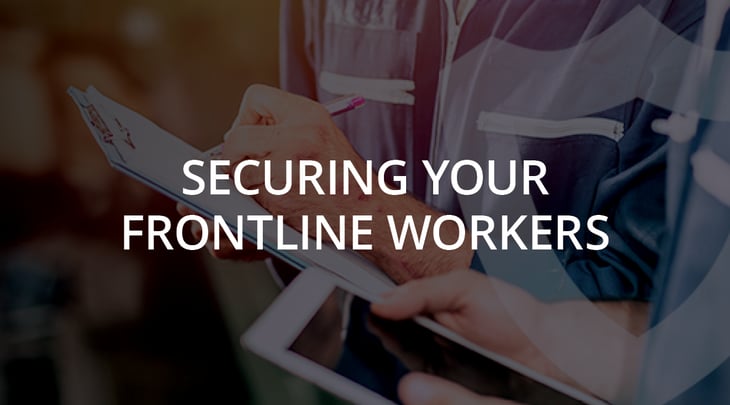Securing Your Frontline Workers
Too often, many companies view frontline workers (employees whose primary function is to work directly with customers in the manufacturing and distribution of products and services) differently from knowledge workers. They are more likely to cut corners when it comes to securing their identities, devices, and data. The best thing you can do to reduce security risks is adopt zero-trust and apply it equally. Don't assume that different workers are higher or lower cybersecurity risks due to the nature of their job. Securing all your devices, including those in the hands of your frontline team, is critical.
Enabling Your Frontline
Most organizations have a variety of user types, and we frequently find a mixture of knowledge workers (who usually spend all day on their PC) and frontline workers. These frontline workers spend most of their day on the production floor, servicing customers on a retail floor, or answering calls in a call center. They are enabled by technology, but many organizations overlook properly equipping them with tech, or unfortunately, securing those devices and software if they do set it up for them. What’s causing the radically different approaches to both kinds of workers, and what can it teach you about cybersecurity for your business?
Knowledge Workers and Frontline
Too often, companies view frontline workers differently from knowledge workers and thus are more likely to cut corners when it comes to securing their identities, devices, and data. But how different are frontline workers from other workers? The truth is, though they may use their devices less often than knowledge workers, they’re the same in terms of cybersecurity: if a member of your organization is using a device, they’re a potential phishing victim and are equally likely to be targeted.
All too often, we see frontline devices that are unsecure due to ignorance or cost - but data is the lifeblood of your business, so it’s imperative to keep it safe by protecting your network from hackers and ransomware. Hackers are looking for the path of least resistance, to exploit it and get into your system – don’t let them in! Secure all your devices, including those in the hands of your frontline team.
Not sure how to enable your frontline workers and keep them secure? Let’s talk about it:
Dangerous Assumptions
We frequently work with clients who make cybersecurity decisions based on assumptions – which can be dangerous!
“Our frontline workers never check their email at home.” Are you sure? They never check their email at home? Have you run reports to verify? Do you have limits set up to only access when on your IP address scheme?
“Why secure their cell phones? They don’t have cell service 98% of the time.” Even if you’re POSITITVE that the 98% figure is accurate, what about the 2% of the time they do have cell service?
Operating off assumptions like this is dangerous, because it leaves vulnerabilities, which hackers will undoubtedly find and exploit. Again, they are looking for the weakest point in your cybersecurity armor. Once an account or device is compromised, the infiltrator has a huge toolbox to use it as a launching pad to try and gain additional access and spread.
At Interlink, we offer a Frontline Security Workshop to help you make sure your frontline workers are secure, and that assumptions about their setup are discussed. This workshop will strengthen your organization’s licensing and security posture regarding frontline workers, ultimately reducing risk and helping save money.
Our upcoming webinar Layering Security for Holistic Defense on February 9, 2023 will dive into how you can create a comprehensive security layer for you network, and what licenses will make the most sense for your business type.
What To Do About It
The best thing you can do is adopt zero-trust and apply it equally – that means all users and all devices! Prevent hackers from getting into your network by making sure there isn’t an easy path in.
This means we need to stop thinking of frontline workers as categorically different from knowledge workers when it comes to cybersecurity measures. One option is to go with the Microsoft 365 F3 license, which includes Multi-Factor Authentication (MFA) and Intune - which are the first security measures you need for frontline workers - at an affordable cost. Check out page four of our licensing guide for the summary of F plans and also ask us about the new F5 Bundles for Security and Compliance which do a better job of matching the functionality of the Microsoft 365 E5 plans.
To engage with us for help securing your frontline workers, contact us about our Frontline Security Workshop today.



